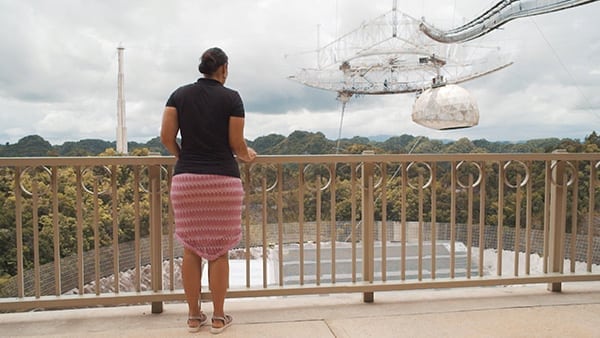Wanda Diaz Merced speaks at TED2016 – Dream, February 15-19, 2016, Vancouver Convention Center, Vancouver, Canada.
By Graham Jones of Ten Sentences and Richard Gelderman, an astronomy professor and director of the Hardin Planetarium at Western Kentucky University. Interview by Richard Gelderman.
After losing her sight in her 20s, Wanda Díaz Merced became a pioneer of sonification, a technique for turning data into sounds. Her TED talk on How a blind astronomer found a way to hear the stars is one of TED’s most-watched astronomy videos. We caught up with Wanda at the General Assembly of the International Astronomical Union (IAU) in Vienna earlier this year.
Scientists used data sonification to transform a photo of sunrise on Mars into a piece of music.
Wanda Díaz Merced was deep in a conversation about her effort to draw more information out of an important data set. I was waiting to break into this discussion, introduce myself, and ask a question of this respected astronomer. To any onlooker, the energy and brightness shared as she expounded on the details of her research were no different from what we experience in encounter after encounter, all through each day, at the IAU General Assembly.
When I got the chance to introduce myself, Wanda’s hand was so confidently extended toward mine that I momentarily wondered if Wanda had at least partial use of her sight. This caught my attention, because I was there to ask a question about how she, as a person with complete loss of her eyesight, uses sound to experience multi-dimensional data sets and images.
Wanda was 19 years old and in the U.S. studying mathematics and physics at university when her first symptoms of blind spots occurred. Wanda was born with diabetic retinopathy, and it slowly destroyed her eyesight until she was completely blind at age 29.

During these difficult young adult years, Wanda resolved to find a way to continue her study of astronomy. At NASA Goddard Space Flight Center during a summer 2005 ACCESS internship, heliophysicist Robert Candey agreed that Wanda should be able to get as deeply involved with the data as any sighted astronomer. She used that encouragement to develop methods to turn plots into dimensions of time and pitch, loudness, or duration. As her efforts increased, they became the foundation of her groundbreaking Ph.D. thesis from the University of Glasgow.
Wanda announced to the audience of her 2016 TED talk:
Information access empowers us to flourish.
However, creating a scientific playing field that is not dependent upon access to all five senses is only one aspect of Wanda’s research.
During our conversation at the IAU’s Inspiring Stars booth, I noted with some surprise as Wanda seamlessly transitioned from facing me, to pointing out a nearby demo, to turning to type on her laptop. She explained:
Without sight, I require a sequence to orient me.
Her work with sonification of digital data is an example of a similar organizational framework.
Astronomical research frequently involves the scrutiny of representations of digital data. Visual interpretation of plots is one way to pursue this goal, but the results of Wanda’s research show that combining sensory modalities makes anyone better at such interpretation.
The computer application interprets brightness, wavelength, position, or temporal information into pitch, loudness or rhythm changing over time. It is these changes that Wanda listens for. She said:
I keep vigilant for the unexpected. Sensitivity to events increases when you use sound. In noisy data, those in our studies identify more peaks, dips, and pulses than just with sight.
Bottom line: Astronomer Wanda Díaz Merced explains how turning digital data into sound can help us find the patterns hidden in the information we receive from telescopes.
EarthSky lunar calendars are cool! They make great gifts. Order now. Going fast!











